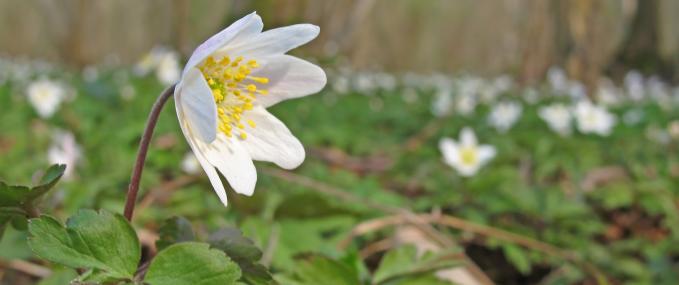The Wood Anemone is a pretty spring flower of ancient woodlands, and is also planted in graveyards, parks and gardens. Its white flowers bloom between March and May before the canopy becomes too dense, but its seeds are mostly infertile and it spreads slowly through the growth of its roots.
The Wildlife Trusts manage many woodland nature reserves sympathetically for a range of spring flowers, from delicate Wood Anemones to showy Bluebells, golden Lesser Celandine to fragrant Ramsons. A mix of coppicing, scrub-cutting and ride maintenance open up the woodland floor to the sun, helping many flowers and plants to thrive. You can help too: volunteer for your local Wildlife Trust and you could be involved in everything from traditional forest crafts to raising awareness about woodland wildlife.
